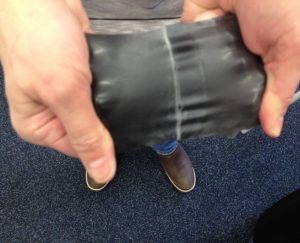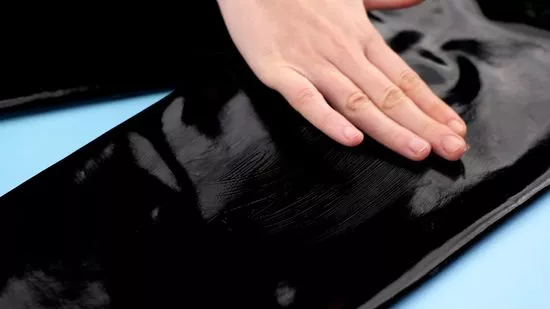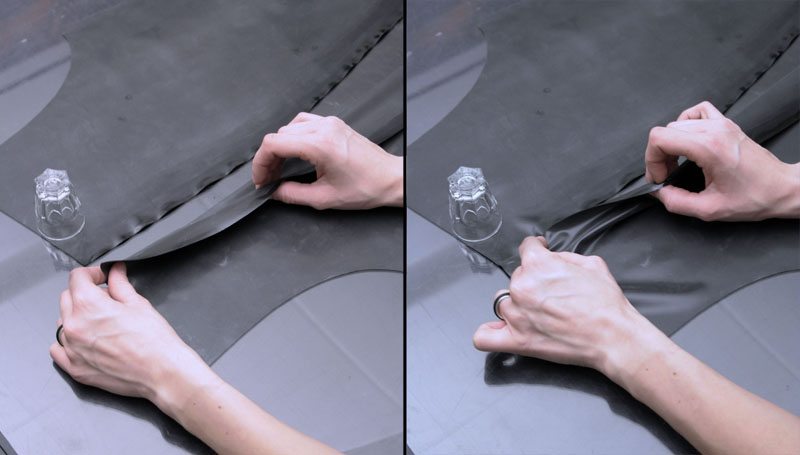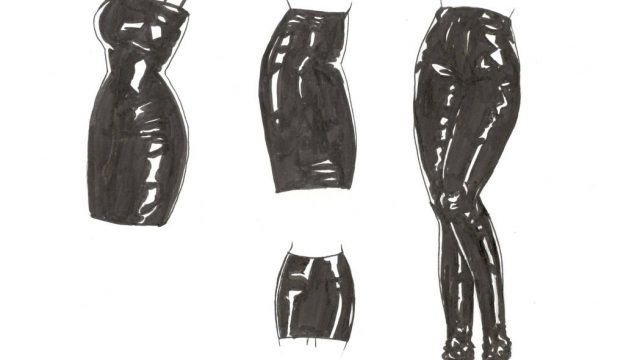Latex materials can come in different forms and shapes, from 100% latex to mixing with synthetic materials. Click here for more.
How to spot genuine latex materials
Latex materials have many variations. Consequently, it is challenging to find what we are looking for. It may sound confusing, but there are ways to make your decisions easier.
Materials made of latex encompass natural and synthetic materials. It might seem like there are no differences, but oh boy are there differences. Your knowledge of the subject will determine if you’re going to buy genuine material or something mixed with fake latex chemicals.
Luckily, we’re here for you! In the following lines, we’ll give you some tips on identifying fake latex materials.
Color check
Although the fabric industry is advancing day by day, it has not yet reached the level where genuine and fake materials are completely equal in appearance. Although this may deceive beginners, experienced latex connoisseurs will not fall for it so easily. Genuine latex materials will always be different in color.
For example, if you buy latex pillows, the color should be milky white. This is not the rule, though, as there are some variations, and the color of the latex mattresses can be light yellow as well. In reverse, materials made from a mixture of latex with other chemicals are usually a rather bright white.
Moreover, the biggest differences are noticeable after a while. Namely, all materials oxidate in time. It is a natural process, and it can also be an unambiguous indicator of whether something’s genuine or not. The “older” latex gets, the more its color pulls on the yellowish. Other materials remain white.
Durability test

You can further continue identifying fake latex materials by examining their durability. Most synthetic latex materials contain petroleum-based chemicals. Thanks to its composition, manufacturing plants are able to produce synthetic rubber polymers, which they use further to get the end product.
As a result, synthetic latex visually looks the same as its genuine counterpart. But because of its composition, the characteristics of a synthetic latex can never be at the same level.
Due to its specific composition, but also the way it is obtained, latex is an impressive rubber material. As such, it has an exceptional ability to stretch and is resistant to various physical forces. It is extremely compact and has a distinct resistance to tearing. However, compared to synthetic, natural latex requires less force to tear but has more elasticity.
Moreover, natural latex is resistant to the most known abrasives, and you can also see the differences between real and synthetic materials even at high temperatures. Namely, natural latex can suffer up to 82 degrees before it starts to corrode. Even then, you can protect it by using treatment chemicals.
Rubber content
As we mentioned earlier, the term latex materials can be confusing and misleading as it includes several variations of the same thing. Moreover, each variant of the material comes in its own specific composition. As a result, classifying real latex materials goes as follows:
- Solid natural rubber (film and granule)
- Concentrated latex
When it comes to everyday use, you’ve probably encountered the first without knowing it. Still, this one is the more popular way of processing latex.
In general, this material contains around 30-40% of rubber, depending on its purpose. Moreover, 55-65% of its composition is water. Now, fresh rubber can also show between 15% and 45% rubber hydrocarbon and some non-rubber ingredients that vary from 2-4%.
On the other hand, blended latex, for instance, as a combination of natural and synthetic materials, contains 15%-25% natural latex. Consequently, this material lacks elasticity, thus considered substantially as plastic.
Cost and pricing

Contrary to popular belief, real and synthetic latex follow each other. This makes sense since the latex synthetic material was created in response to the lack of the original. However, it is very difficult to talk about the right price since it is determined by supply and demand.
Namely, many car tire manufacturers are in constant demand for this material, which significantly affects the price of the same. The lack of natural latex is forcing the market to turn to alternatives. Therefore, there’s an increase in demand for a synthetic counterpart.
At the moment, the price of the tire is in the downtrend and is around $1.93 per kilogram. This is a significant drop, as the price was approximately $2.5 per kilogram over the past year. The price is also affected by the cost of land and labor.
As end-users, we always want our favorite product to be as affordable as possible. Nonetheless, it is difficult to determine how realistic this is in these circumstances.
Manufacturers and sellers
With people knowing a little about the differences between genuine latex and fake ones, companies see their opportunity to make a quick buck. As a result of lack of knowledge, there’s a chance that you’re going to overpay for the fake material, at least until you read this article.

One example is happening right now. Namely, given the circumstances, the demand for latex gloves has jumped significantly. Many companies saw this trend as an opportunity to make money and launched PVC gloves as nitrile. However, there are ways to recognize the right product.
Legitimate companies follow FDA rules first and foremost. Look at the packaging and consider the following information:
- Bar code,
- Lot number,
- Contact info.
Legitimate companies are more often transparent, and you will find it easier to get product details. We do not mean only the product’s composition, but also the details of the company itself.
Thus, before you decide to go shopping, check out the seller you intend to visit or see LaidTEX.com for products that would satisfy your taste. There are tons of available materials online to help you keep an ear on the ground about the latex industry.
What should you do?
After reading the lines above, you’ll become a genuine latex connoisseur. As such, you’ll become a master in identifying fake latex materials. After becoming more knowledgeable, you’ll quickly notice how many fakes are on the market. This trend can be extremely harmful, as fake latex materials can have several negative consequences to one’s health.
Due to its composition, synthetic latex can cause cancer.m. Moreover, polyurethane foam is responsible for releasing toxins during synthetic latex manufacture. Thus, synthetic latex materials emit cancerogenic gasses.
Many car manufacturers use synthetic material based on latex in the making of tires, seals, and hoses. However, you can find that many mattresses and furniture are typically composed of synthetic materials. This can lead to harmful effects of EMF. Thus, your choice of mattress can directly impact your health. Namely, the EMF contained in a synthetic mattress can limit your body’s regeneration capacity without you knowing.
When you notice a company with the lousy practice of selling counterfeit products, be sure to report it to the Consumer Product Safety Commission. Only in this way can companies be eradicated, which not only charge consumers more for the product but also harm the health of all of us.

